Transit Planning
Ownership & Governance
Different Institutional Forms
- Local Agency
- Better integration
- Budget constraints
- Transit Authority or District
- Multijurisdictional setting
- Better funding and Districts can raise their taxes
- Cooperative Arrangements
- Cooperating among different agencies to provide transit in any area
- Jointly redistribution revenues
- Privatization
- Paratransit or demand-responsive transit
- Some form of operations like maintenance/fare collection
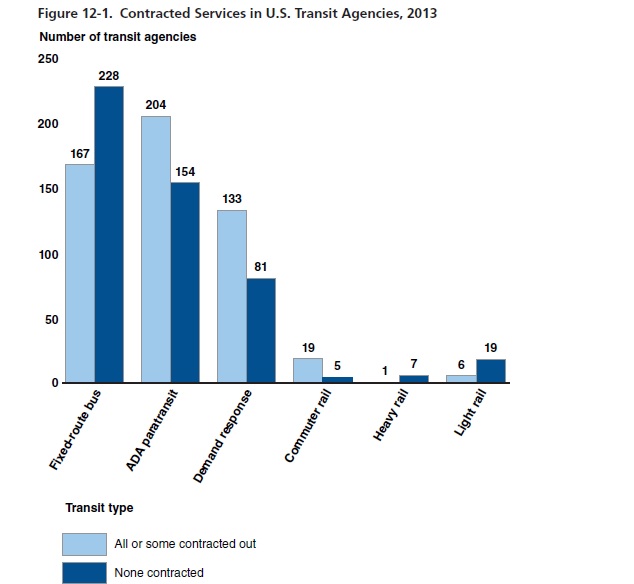
Contemporary Transit Planning
- Ridership
- Estimated in both passenger-miles traveled and unlinked passenger trips.
- Increased since 1990 in United States
- Trip Lengths and Operating Speeds
- The ratio of passenger-miles traveled to revenue vehicle-miles (or vehicle-hours) operated offers insight into vehicle loadings (utilization) and trip lengths
- A revenue vehicle-mile is defined as a mile traveled while the vehicle was providing service

Transit Modes
- Rights-of-way, technologies, and operational characteristics
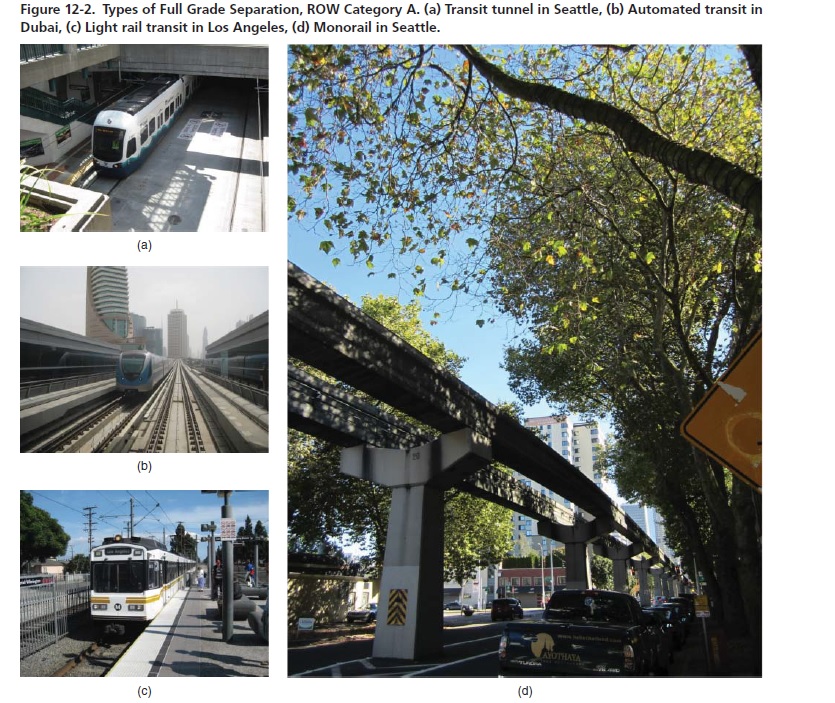
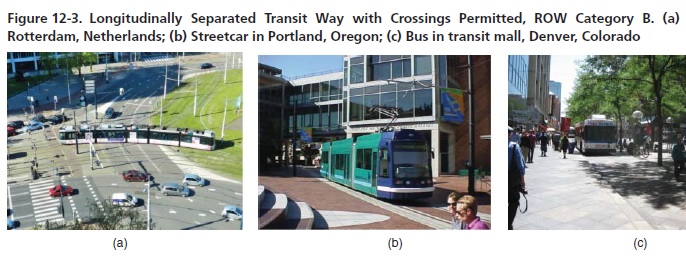

Transit Modes : Bus Transit
- Bus Transit Modes
- Regular IC Engine Buses and Electrical Buses/Trolley
- Low operation costs i.e. economical
- Regular Bus systems with bus travel ways and dedicated busways
- Bus Rapid Transit system with physically separated rights-of-way and busways
- BRT is popularized in Bogota Columbia
- BRT service is preferred to improve bus speed, reliability, and identity
- BRT systems commonly use 52.5- to 60-ft (16- to 18-m) articulated buses.
- Separate design criteria for stations and intersection signals etc.
- BRT can carry about 6,000 passengers per hour
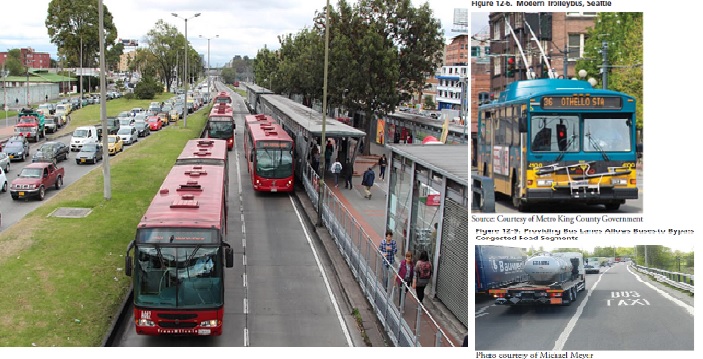
Transit Modes : Guided Transit
- Street car
- Streetcars were the dominant mode of street transit in many cities until the 1950
- Streetcars are electrically powered vehicles, usually articulated
- Streetcars and LRT share basic technological characteristics
- Light Rail Transit
- LRT is an electrically powered system that operates mostly on right-of-way category
- 35 LRT/streetcar systems operating in the United States in 2012 and 12 in procurement stage
- Variety of vehicle design, right-of-way types, station configurations, and speeds presents many opportunities in the design of LRT lines
- Rapid Rail Transit
- RRT is an electrically powered system of trains operating only on exclusive rights-of-way and with fully access-controlled stations.
- RRT systems use fail-safe train control systems, which consist of signals controlling occupancies
- Regional Rail Transit
- A system of electric or diesel-powered trains operating on railroad rights-of-way
- Higher speeds and more gap between stations
- Mono Rail
- Run along a single beam and costs about
- The ability to run only on elevated sections, complicated switching, and greater operational complexity than rail systems
- Run along a single beam and costs about
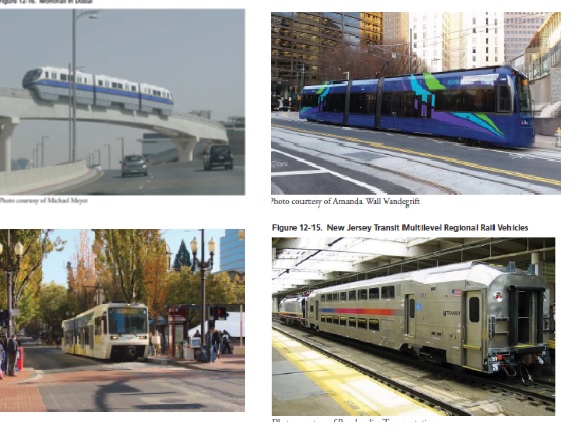
Transit Modes : Paratransit & Other Modes
- Automated Systems: Automated people movers, automated guided transit and Automated metros
- Semi Public Para Transit:
- Available to certain categories of users
- Subscription vans or buses like Vanpools , Car sharing and Subscription programs
- Public Para Transit
- Available to any individual or group of persons
- Taxis/Uber/Lyft.
- Jitneys
- Flexible Transit Service – demand responsive
- Terrain based
- Cable Cars, Cog railways, Funicular, Aerial Tramways
- Water based Transit
- Passenger and auto ferries and water taxis

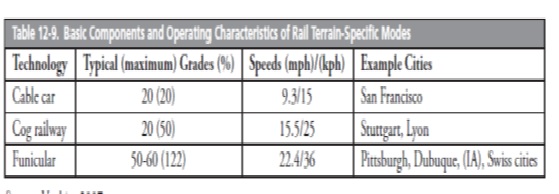
Costs & Quality of service
Capital Costs and Operation Costs
E.g. O & M Costs =
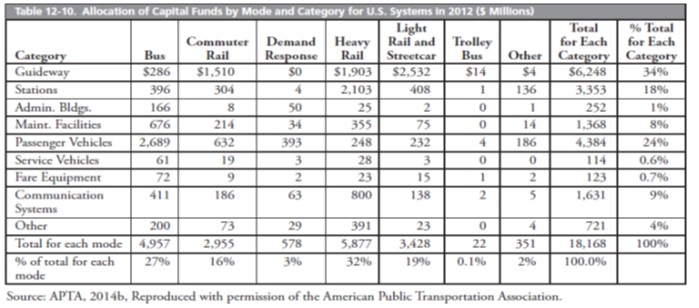

Transit Planning Procedure
- Strategic Planning
- Linked to budgeting process
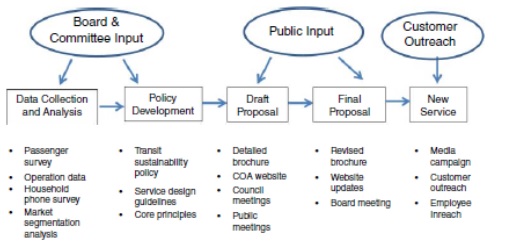
- Comprehensive Operational Analysis
- Where best to change the network
- Adjustments to running times, departure times/locations, transfer times, and stop spacing to improve schedule adherence and customer satisfaction.
- Removal of minimally used bus stops and/or consolidation of bus stops.
- Appropriate vehicle type and service characteristics, including fixed- and flex-route, local, limited, and express service.
- Long range Transit Planning
- Done by MPOs
- Planning for major transit investments
- Mode and Technology Selection
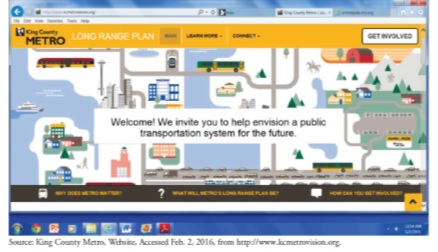
Planning for passenger stations
- Vision for Passenger Station
- Market Research (Demand Estimation)
- Performance Analysis Techniques
- Process analysis
- Simulation
- Queuing
- Pedestrian analysis
- Life cycling planning
- Security
- Information systems
Non-Motorized Transport
Goals and Benchmark for Pedestrian and Bicycle Planning
- Pedestrian and Bicycle Trips as Alternative Modes of Transportation
- Walking and Bicycling for Healthy Lifestyles
- Less Costly Travel
- Environmentally-Friendly Travel Modes
Important Considerations in Today’s Planning Environment
- Balance among Transportation Modes and Complete Streets
- Context-Sensitive Design/Solutions
- Land Use
- Education, Encouragement, and Enforcement
- Design Flexibility to Enhance Safety
Pedestrian and Bicyclist Planning
- Understanding the Context and Problem
- Developing Vision/Goals/Objectives/Performance Measures
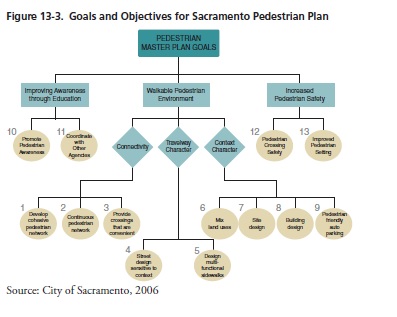
-
Analyzing Walking and Bicycling Alternatives
- Data
- Surveys
- Travel Demand Models
- Pedestrian and Bicyclist Suitability, Level of Service, and Level of Traffic Stress Analysis
- Pedestrian and Bicyclist Safety Analysis
- Simulation and Network Models
- Transportation Impact Studies
- Environmental Justice Analysis
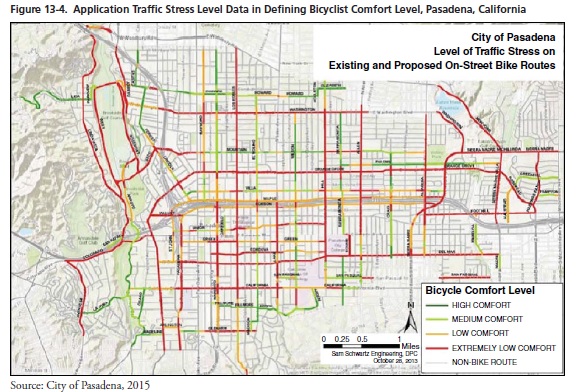

Pedestrian and Bicyclist Planning Design Issues
- All streets where bicyclists are permitted to ride and share the same travel lanes with motor vehicles are technically classified as shared roadways.

- Pedestrian facilities should be designed with the following factors in mind
- Sufficient Width
- Protection from Traffic
- Intersection Design
- Street Trees
- Pedestrian-Scale Design
- Continuity
- Clearances
- Conformance with National Standards